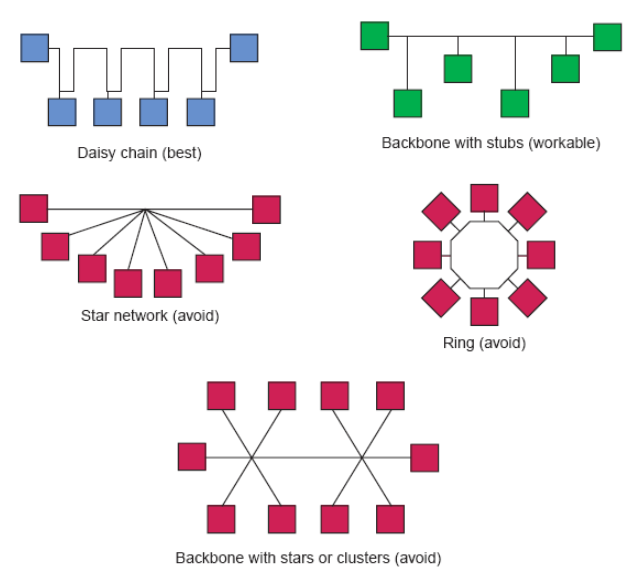Troubleshooting RS485 / Modbus RTU Wiring
When troubleshooting a Modbus setup ‘no-response from slave’ errors can be the most difficult to troubleshoot because it means that no activity is being recognized between the slave and master.
Basic Checks for No-response from slave error:
- Check that communication settings parameters are correct (baud rate, etc).
- Check that the slave address matches with the id assigned in data logger
- Check modbus wiring
- Check for reversed polarity on RS485 lines. If uncertain, just try swapping them.
Still Not resolved ? Follow these
If you are unable to resolve by following the above basic checks, you will be then required to check the RS485 network in more details by checking all the below recommendations.
Each installation is unique and has its own characteristics which can be tricky to some extent for even the most experienced integrators. Moreover, with the pressure normally involved in these situations with short deadlines for commissioning, non-availability of skilled site engineer, often trivial mistakes are made. Thus, we offer some tips to help plan and debug the operation of your RS485 Network
Connecting Cable - Read this if you are using random cables instead of Shielded & Twisted RS485 Cables ?
Generally, a shielded & twisted-pair wire such as Belden 9841 (Single pair) or 9842 (Two pair) with a characteristic impedance of 120 ohms is recommended which should be also terminated at each end with a 120 ohm, quarter watt (or greater) resistor.
- Ensure you are not using random electrical wires to avoid issues in the long term.
- Shielded & twisted pair RS485 cable is always recommended- The shield helps protect your signals from picking up stray noise from nearby wiring and other electrical equipment. The shield will provide little benefit just on your bench or for short runs with no other equipment around, but its value goes up as exposure to sources of noise goes up.
- The gauge of wire is typically 22 gauge or something close to that. The gauge number itself is not important. What is important is keeping both resistance and capacitance as low as possible. The longer the network will be, the more important it is that you use good quality wire. The wire manufacturers have wire designed specifically for data networks.
Network Layout (Daisy Chain , Star etc)
Several types of network topologies are possible, but the daisy-chain bus configuration is the most efficient. A “Star” or a network with “Stubs (Tees)” is not recommended as reflections within the cable may result in data corruption.

Many common network topologies exist,but the daisy chain is the most reliable for RS485 networks.
Routing cables for communication with power cables ?
Termination resistors -Yes you need to switch on !
RS485 network shall include cable termination as per Modbus protocol specifications. Check if Termination resistors are not set up properly.
Yes you need it, although most things will work without any termination for short distances but in the field, it is needed, and must be located at both ends of the line and only at the two far ends of the line. Typically this termination consists of a 120 ohm resistor between the two data lines at each end of the line.
The termination is required to avoid reflections on the line. Think of tossing a pebble into calm water near a stone wall. When the ripples hit the wall, they bounce back toward where the pebble was tossed in. Data on a long unterminated transmission line will do essentially the same thing. When the reflection comes back to a point where something is trying to listen to the line, the receiver will see both original data and reflected data, and the receiver will quickly get confused and end up with garbled data. The garbled data will get tossed out since it does not pass framing and/or checksum tests.
Multiple Masters in one Network
To make it more easy to understand in general situations – One Inverter should only be connected to 1 single Data Logger.
The Modbus-RTU protocol allows only one master and the addition of a second one can interfere the operation of the network or can completely prevent communications.
Suggestion: If possible, create the RS485 network gradually. Start with a slave and add the others one by one, checking whether the operation of the network is still OK. In the event of any problem, debugging is much easier.
